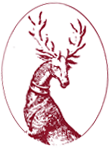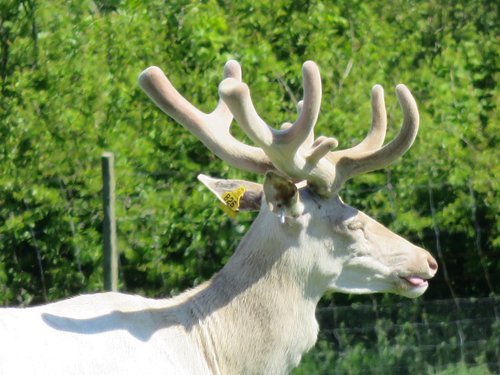THE HISTORY OF WHITE RED DEER
Symbolism. In red deer, white examples have always been very uncommon. White hinds and white stags by their very rarity fostered an enormous body of legend, rather in the same way that Moby Dick - the white whale - or the White Rabbit in Alice in Wonderland attract mysticism: Alice and Ahab both hunted the white animal and became ‘other worldly’.
Much symbolism is associated especially with the mature white red deer or white hart. In Sir Thomas Malory's thirteenth century Quest for the Holy Grail:
‘And well ought our Lorde be signifyed to an harte. For the harte, whan he is olde, he waxith yonge agayne in his wyght skynne. ……..and for that cause appered our Lorde as a whyghte harte withoute spot.'
As I describe in my book, ‘Gardens of Earthly Delight – The History of Deer Parks’ there are three particular iconographic symbols relating to deer in parks: there is the connection with water which we know from the psalms: – ‘as pants the hart for cooling streams when heated in the chase, so longs my soul, O God, for Thee’, then there is the tame controlled stag or ‘le cerf privé’ which we associate with stags wearing collars in mythology and legends of secret gardens and, thirdly, there is the white deer. This refers mainly to the white hart (the word ‘hart’ is the medieval name for an adult red deer stag) and only occasionally to a white fallow deer.
White red deer were pivotal in the foundation myths of countries as disparate as Hungary and Japan. In Hungary it was believed that a white stag led the brothers Hunor and Magor to Scythia, an action which preceded the formation of the Hun and Magyar people. In 1937 the American author, Kate Seredy, published a children’s book entitled ‘The White Stag’ based on this foundation myth.
Royal connections. Adult white red deer - white harts - were also believed to have strong associations with royalty. Their death was believed until very recently to presage the death of Highland chieftains in several parts of Scotland. Sometimes even the sight of a white stag was sufficient. In England, there is a legend of King Henry III sparing the life of a white hart which was subsequently killed by Thomas de la Lynde whose family were then required by the King to pay a fine in perpetuity. The story features in Tess of the d'Urbervilles and the fine is supposed to have been paid up until the reign of Queen Victoria.







